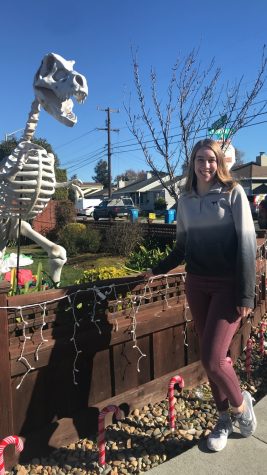COVID-19 information and updates
Signs regarding masks and COVID-19 safety were placed outside of each building on campus.
September 4, 2020
COVID-19. It has been talked about for all of the summer, and we will continue to bring you updates throughout the semester to keep you informed so you can make the best health decision.
Rick Ewing, vice president of operation and planning, has been preparing for the return of students by cleaning, sanitizing and even researching the contents of the cleaning supplies.
“We’ve been focused on deep intensive cleaning throughout campus,” Ewing said. “Everything has been cleaned thoroughly for the last several months. We have made schedules and protocols to make sure we have the CDC recommended cleaning.”
Procedures for every classroom has been put into place: faculty will disinfect once class lets out with the bottles and rags provided.
“The message that’s been out there is all about having people understand the situation,” Ewing said. “Personal commitment to doing what we need to do to keep everyone safe and protect the university from an outbreak.”
Green Shield Badge
Campus Shield is an app that acts as an emergency notification system. On it, there is a function for a COVID-19 assessment.
Students are responsible for updating their symptoms and acting accordingly. If students answer “no” for each question, they will have a green shield badge that is valid for 24 hours.
The green shield badge will be needed to enter the rec center and everyone is required to download it.
Isolation vs. Quarantine
The difference between isolation and quarantine is simple: sickness. Isolation will happen when an individual is too sick to travel and tested positive. Quarantine means an individual may be symptomatic but has not yet tested positive.
According to the town hall meeting that took place Aug. 27, Dr. Robert Pool, vice president for student affairs, said that isolation room for those who are too sick to travel.
A private list of cases will be updated to coordinate their needs on campus and will be paired with a Care Team member: a volunteer faculty/staff member used for communication and keeping up with necessities.
Students can find the COVID-19 Dashboard on the AU website (head to the AU website and click on Return to Campus: Stronger Together, Safer Together). This tracks cases for the AU community. Information about any other question a student, parent or faculty member could have is answered in the dropdown boxes on the upper left-hand side.
“All information is in one convenient place for students,” Shawn Orr, director of the Center for Innovation & Teaching Excellence, and professional instructor of communication studies, said.
Testing
Unlike some schools, AU students will not be tested to return on campus.
“There are some false positives with testing,” Dr. Carlos Campo, president of AU, said during the town hall meeting. “If folks are symptomatic, if they are feeling that they are under the weather and may have symptoms, there is testing on campus and in the community.”
Academics
Commuter students, or students who do not want to spend all day in their dorm, can go to specific locations on campus for a quiet space to do work. This list can be found by going to the Students dropbox and clicking Virtual Class Space (from the AU website: Return to Campus: Stronger Together, Safer Together link). Locations include the Chapel, Andrews and Bixler.
The Center for Innovation and Teaching Excellence (CITE) helps faculty develop their skills and learning experiences for students, by providing support, resources and collaborative programs.
Over the summer, CITE in conjunction with the Department of Academic Technology and the LearnAU Instructional Designers, offered eight High Impact Summer Faculty Institutes for 134 AU faculty, ranging from 3-18 hours.
Instruction and support on virtual learning design, digital course materials, syllabus development, group work and engagement, utilizing BlackBoard, course communication, supporting virtual learning and creating virtual instructor presence were included.
“Faculty had the opportunity to ask questions about the development of fall courses and support each other during small group dialogue,” Orr says. This past week, Fall Faculty College was held which “included a keynote presentation by EAB on how COVID-19 is impacting faculty and students for fall 2020 and how faculty can support students during this dynamic and changing semester.”
There were also 15 professional development sessions for faculty on everything from effectively using classroom technology, to presentation skills while wearing a face mask to planning a productive and balanced semester.



